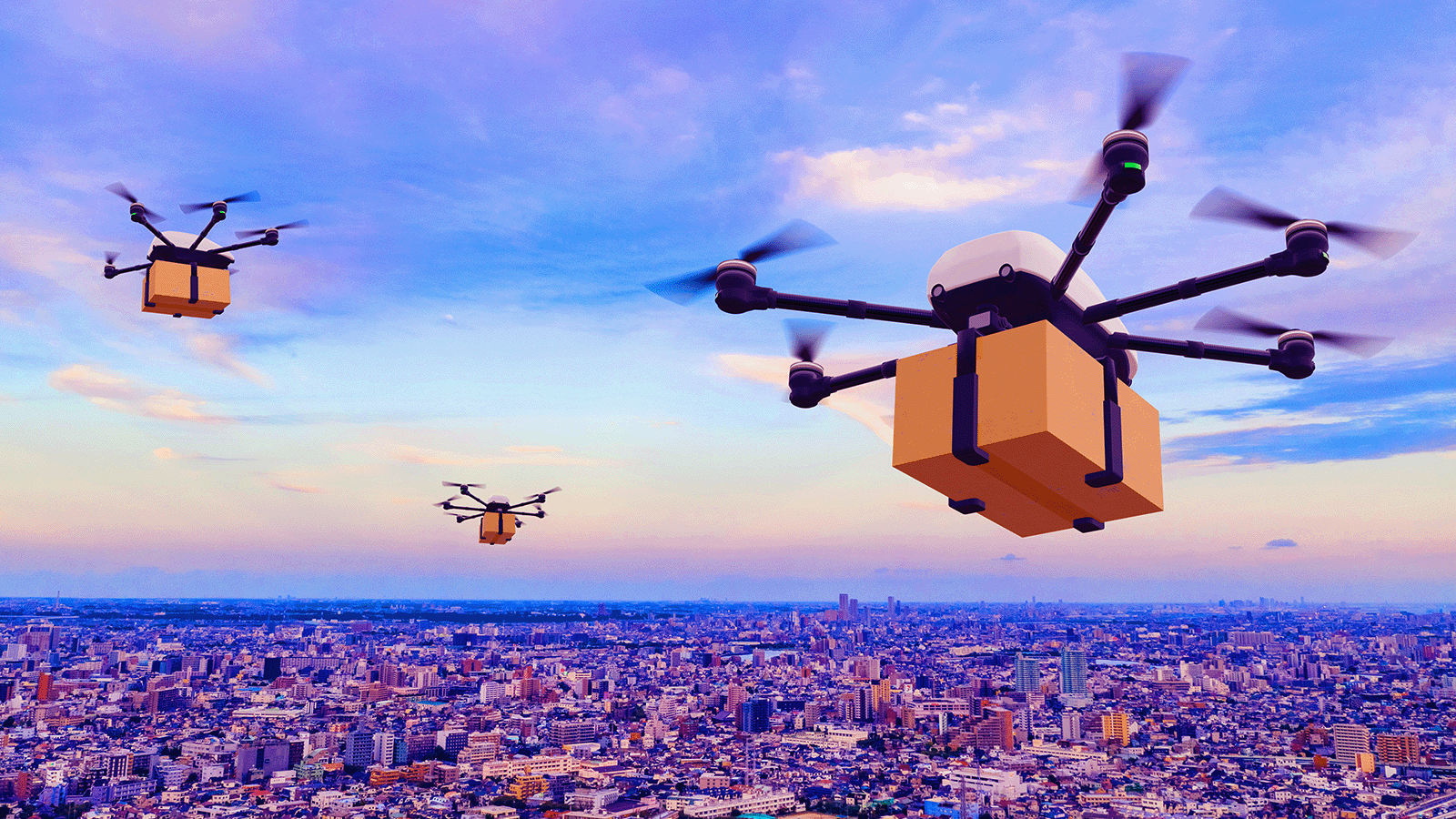
By K Raveendran
Drone cameras at weddings and social events no longer make eyes pop up. But the day may not be far off when your favourite pizza will be delivered to you by a drone rather than the Swiggy rider, adding to the chaotic scenes on the roads as he has to negotiate all kinds of odds to beat the delivery deadline; for, any slippage means a cut in the money that goes into his pocket because pizza chains are promising not to charge customers if delivery is delayed beyond the promised time.
Drones made more than 2,000 commercial deliveries each day across the globe in 2022. With their potential to meet the needs of consumers who want prepared foods and other small packages delivered, in addition to making last-mile business-to-business deliveries, such as moving medical samples to labs, drones could become an important part of the delivery supply chain, McKinsey partner Robin Riedel and colleagues share on the Future Air Mobility blog.
As the industry develops, drones could become as cost-effective for package delivery as other modes of transport, a McKinsey analysis finds. Drones are also environmentally friendly, with carbon dioxide emissions for a single delivery typically lower than those of electric cars and vans and significantly lower than those of gasoline-powered vehicles.
The United States is already getting closer to the day when delivery by drone hits the mainstream. Three American drone operators have been granted permission to fly their uncrewed aerial vehicles out of range of human sight. That could lead the way for businesses to send packages across the country by drone. As the industry steps out of its infancy, drones may become cost competitive at a direct operating cost level.
In fact, under certain conditions, such as in regions with poor road infrastructure or when pooling deliveries does not make sense, drones may already be the most cost-effective mode of delivery, the consultancy’s research shows. They are also environmentally friendly, with CO2 emissions typically lower than all the traditional modes of transportation.
The analysis suggests that If drone operators can eventually manage 20 drones simultaneously, a single package delivery will cost about $1.50 to $2. That is lower than the per-package cost for an electric car delivering five packages, and in line with any type of van delivering 100 packages in a milk-run format when a driver delivers all packages in a single trip. Deliveries provided through current food delivery apps and services cost more than its estimates for future drone deliveries in which drone operators will be able to operate multiple drones simultaneously.
A compilation of charges in various modes of delivery undertaken by the consultancy shows drones currently may not be the most competitive. A comparison showed unit delivery costs and emissions for an 8km-delivery of a packet with six inches each on the sides currently at $13.5 for drones, $9.4 for EVM and $11 for an EVM van. But if one operator can handle more drones, the cost would come down significantly, just as bulk deliveries by other modes cut the overall cost.
However, for drones to become truly cost competitive across the board, McKinsey says that the operators will need to be able to shift their focus from observing airspace to operating drones, and the number of drones per operator will need to increase significantly. That, in turn, will require technology and regulation to advance sufficiently for a single operator to manage as many as 20 drones in a densely used airspace. These advances would include autonomous drone flight in which drones fly with limited human intervention, unmanned traffic management systems, and sense-and-avoid solutions.
According to the calculations, if drone operators can eventually manage 20 drones simultaneously, a single package delivery will cost about $1.50 to $2. That is lower than the per-package cost for an electric car delivering five packages, and in line with any type of van delivering 100 packages in a milk-run format when a driver delivers all packages in a single trip. Deliveries provided through current food delivery apps and services cost more than McKinsey’s estimates for future drone deliveries in which drone operators will be able to operate multiple drones simultaneously.
The consultancy suggests that given the potential cost and sustainability benefits of drone deliveries, retail chains, restaurant groups, and supermarket chains would do well to build a clear strategy for their use. As companies develop their strategy, they will need to balance the difficulties of drone operations with the potential benefits. But it cautions that developing drone delivery capabilities will not be simple, especially at a smaller scale. And as companies reach full drone delivery capabilities, they will begin to see expanded benefits in their delivery strategies. (IPA Service)
The post Delivery Of Packets By Drones May Become Mainstream Sooner Than Expected first appeared on Latest India news, analysis and reports on IPA Newspack.


